Breaking free from addiction starts with detoxification – a crucial first step that cleanses your body of harmful substances. Yet detox alone isn’t enough to maintain lasting sobriety. Creating a sustainable recovery routine transforms this initial breakthrough into lifelong success.
The journey from detox to daily life requires careful planning and dedication. You’ll need to build new habits, develop coping mechanisms, and establish support systems that work for your unique situation. A well-structured recovery plan becomes your roadmap to:
- Maintaining physical and mental wellness
- Managing triggers effectively
- Building healthy relationships
- Creating meaningful daily routines
- Achieving personal growth goals
Your path to recovery doesn’t end when detox is complete – it evolves into a sustainable lifestyle that supports your sobriety. At Cedar Oaks Wellness, we guide you through this transition, helping you develop the skills and strategies needed for long-term success. A comprehensive recovery routine empowers you to embrace a fulfilling life free from substance dependence.
Understanding Detoxification: The Foundation of Recovery
Detoxification is the crucial first step in addiction treatment, usually lasting 3-10 days depending on the type of substance and your history of use. During this time, your body gets rid of harmful substances while medical professionals keep an eye on your vital signs and help manage any withdrawal symptoms.
Why Medical Supervision is Important
It’s important to have medical supervision during detox because withdrawal can cause serious physical reactions such as:
- High blood pressure
- Seizures
- Severe anxiety
- Dehydration
- Life-threatening complications
What a Structured Detox Program Offers
A structured detox program provides:
- 24/7 medical monitoring
- Medication-assisted treatment
- Stabilization of vital signs
- Nutritional support
- Emergency medical intervention
How Detox Supports Recovery
Detox helps you physically stabilize and prepares you for recovery, but it only addresses the immediate physical dependence on substances. It doesn’t deal with underlying psychological issues, trauma, or behavioral patterns that led to substance use.
At Cedar Oaks Wellness, our medical professionals tailor detox protocols to meet your specific needs, ensuring a safe transition to the next phase of treatment.
Transitioning From Detox to Comprehensive Treatment Programs
The path from detox to long-term recovery requires careful consideration of treatment options. Inpatient rehabilitation provides structured 24/7 care in a residential setting, ideal for individuals with severe addiction or unstable home environments. Outpatient programs offer flexible scheduling while maintaining daily responsibilities, suited for those with strong support systems and mild to moderate substance use disorders.
Selecting the right treatment program depends on several factors:
- Severity of addiction
- Mental health conditions
- Family responsibilities
- Work commitments
- Financial resources
- Available support network
A personalized aftercare plan acts as your sustainable recovery roadmap, incorporating:
- Regular therapy sessions
- Support group meetings
- Medication management
- Life skills training
- Relapse prevention strategies
The seamless transition between treatment phases strengthens recovery success. Your care team coordinates between programs, ensuring consistent treatment approaches and uninterrupted support. This coordination includes sharing medical records, treatment progress, and recovery goals across providers.
At Cedar Oaks Wellness, we create individualized treatment paths that adapt to your changing needs throughout recovery. Discover what to expect after detox and explore essential next steps for your recovery journey towards lasting sobriety by visiting our website and exploring our resources on what happens after detox.
Core Components of a Sustainable Recovery Routine
Evidence-based therapies form the backbone of sustainable recovery. Cognitive Behavioral Therapy (CBT) helps you identify destructive thought patterns and develop healthier coping mechanisms. Through CBT, you’ll learn to:
- Challenge negative self-talk
- Recognize distorted thinking patterns
- Create practical solutions for high-risk situations
- Build resilience against stress triggers
Dialectical Behavior Therapy (DBT) provides essential skills for emotional regulation and interpersonal effectiveness. DBT techniques include:
- Mindfulness practices for staying present
- Distress tolerance skills
- Healthy boundary setting
- Crisis management strategies
Managing triggers and cravings requires a personalized toolkit of coping strategies. You’ll develop specific action plans for:
- Identifying personal trigger situations
- Using grounding techniques during intense cravings
- Implementing healthy distraction methods
- Practicing stress-reduction exercises
These therapeutic approaches work together to build a strong foundation for your sustainable recovery journey. Regular practice of these skills strengthens your ability to maintain sobriety and handle life’s challenges effectively.
Incorporating Holistic Approaches into Sustainable Recovery
Mindfulness practices create powerful pathways to emotional stability in recovery. These evidence-based techniques complement traditional treatment methods by addressing both mind and body healing.
Key mindfulness practices include:
- Meditation – Daily meditation sessions help you develop present-moment awareness, reducing anxiety and stress. Even 5-10 minutes of guided meditation can reset your emotional state.
- Yoga – Gentle movement combined with breathwork strengthens the mind-body connection. Regular yoga practice improves sleep quality, reduces cravings, and builds resilience.
- Breathwork – Simple breathing exercises provide immediate tools for managing difficult emotions and triggering situations. The 4-7-8 breathing technique is particularly effective for anxiety reduction.
These holistic approaches work by activating your body’s natural relaxation response. Research shows mindfulness practices reduce cortisol levels and increase feel-good neurotransmitters like serotonin and dopamine. Many Cedar Oaks clients report decreased anxiety, improved emotional regulation, and enhanced self-awareness through consistent mindfulness practice.
Integrating these techniques into your daily routine creates sustainable coping mechanisms that support long-term sobriety.
Building a Supportive Recovery Environment
A stable living environment plays a crucial role in maintaining sobriety. Sober living arrangements provide structured, substance-free spaces that support your recovery journey. These specialized housing options offer:
- Clear house rules and expectations
- Regular drug testing to ensure accountability
- Shared responsibilities with other residents
- Built-in peer support networks
- Professional supervision and guidance
Your living space directly impacts your recovery success. Choosing a sober living arrangement helps you:
- Practice life skills in a controlled setting
- Build healthy relationships with others in recovery
- Develop consistent daily routines
- Access immediate support during challenging moments
- Create distance from triggers and negative influences
Many sober living homes integrate additional recovery resources:
- On-site counseling services
- Employment assistance programs
- Life skills workshops
- Transportation to treatment appointments
- Community engagement opportunities
Cedar Oaks Wellness partners with reputable sober living facilities to help you find the right environment for your recovery needs. These partnerships ensure seamless coordination between your treatment program and living arrangements.
A stable recovery environment is not just about avoiding substances; it’s about creating a supportive network that fosters growth, healing, and reintegration into society.
Relapse Prevention and Long-Term Maintenance Strategies
Recognizing early warning signs of relapse empowers you to take immediate action before a full relapse occurs. These signs often appear in a predictable pattern, especially in the early stages of recovery:
Emotional Indicators:
- Increased anxiety or depression
- Sudden mood swings
- Isolation from support systems
- Romanticizing past substance use
Behavioral Red Flags:
- Skipping recovery meetings
- Reconnecting with people from active addiction
- Stopping prescribed medications
- Changes in sleep or eating patterns
Your relapse prevention plan should include specific action steps for each warning sign. Keep a daily journal to track your emotional state and behavioral patterns. When you notice these indicators, implement your predetermined strategies:
- Call your sponsor or counselor immediately
- Attend additional support group meetings
- Practice stress-reduction techniques
- Review your reasons for choosing recovery
- Schedule an emergency therapy session
Cedar Oaks Wellness Center helps you develop personalized relapse prevention strategies tailored to your unique triggers and circumstances. These tools become your safety net, protecting your hard-earned progress in recovery.
Conclusion
Building a sustainable recovery routine is a deeply personal journey that extends far beyond the initial detox phase. Your path to lasting sobriety requires dedication, self-awareness, and the right support system.
Cedar Oaks Wellness Center stands ready to guide you through each step of your recovery journey. Our comprehensive addiction treatment programs, which include outpatient addiction treatment and inpatient drug rehab, combine evidence-based therapies with personalized care to help you:
- Develop effective coping strategies
- Build resilient support networks
- Create sustainable daily routines
- Master long-term sobriety skills through our aftercare and alumni program
Take the first step toward your sustainable recovery today. Contact Cedar Oaks Wellness at [phone number] to speak with our experienced treatment specialists and discover how we can support your journey to lasting wellness.

